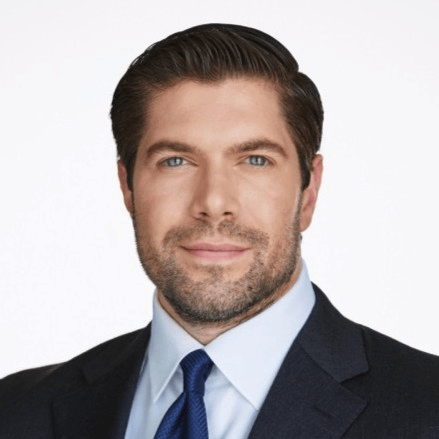Picture this: you’re attending a conference, eagerly waiting for the keynote speaker to take the stage. As the lights dim and the presentation begins, you strain to hear the speaker’s words, but the audio is muffled and unclear. Frustrating, isn’t it?
As an event or conference planner, you understand the importance of delivering high-quality audio in conference videography. It enhances the viewer’s experience, aids comprehension, and reflects the credibility of the event.
In this article, we will delve into valuable tips and techniques for achieving exceptional audio in conference videography.
Contents
Collaborating with the AV Team
Importance of Collaboration
Collaboration is key when it comes to achieving high-quality audio in conference videography. As an event or conference planner, you work closely with the venue’s AV team, who handle various aspects of audio, lighting, and projection setup.
By fostering open communication and a collaborative mindset, you can ensure a seamless integration of audio and video components. This collaboration allows for a cohesive approach to achieving outstanding audio quality.
Discussing Audio Requirements
When working with the AV team, it’s crucial to have detailed discussions about your specific audio requirements. Clearly communicate your desired audio quality, microphone placement, and any challenges unique to the conference setting.
By involving the videographer and the AV team in these discussions, you can address potential issues, ensure proper microphone setup, and create a cohesive audiovisual experience for the attendees.
Coordinating Lighting and Projection Setup
Apart from audio considerations, the AV team also handles lighting and projection setup. Collaboration with the AV team becomes essential to synchronize these elements with the video capture.
By coordinating with the AV team, the videographer can ensure that the lighting and projection complement the audio and video, enhancing the overall production value of the conference recordings.
Selecting the Right Videographer
Expertise in Audio Recording
When hiring a videographer for conference videography, it’s essential to prioritize their expertise in audio recording. Look for videographers who have a strong understanding of microphone selection, placement, and capturing clear audio in various conference settings.
They should have experience working closely with AV teams and possess the technical knowledge required to deliver exceptional audio quality.
Collaboration Skills
Apart from audio expertise, collaboration skills are vital for a videographer working in conference videography. They need to be able to effectively communicate and coordinate with other professionals, including the AV team.
The videographer should work in tandem with the AV team to ensure seamless integration of audio and video components, minimizing technical issues and maximizing audio quality.
Knowledge of Camera Techniques
While the AV team handles various audio and visual elements, the videographer is primarily responsible for capturing the video footage and ensuring optimal camera techniques. Hiring a videographer who possesses knowledge of camera settings, framing, and positioning is crucial.
Their expertise will complement the audio capture and ensure visually appealing conference recordings.
Camera and Microphone Considerations
Quality Camera Equipment
To capture high-quality video footage, a videographer should invest in top-notch camera equipment. High-resolution cameras with excellent low-light capabilities and image stabilization can significantly enhance the quality of conference recordings.
By utilizing quality camera equipment, the videographer can ensure sharp and clear visuals that complement the superior audio capture.
Microphone Selection and Placement
While the AV team handles microphone setup, the videographer plays a crucial role in coordinating with them to determine the types of microphones required for the conference.
Collaborate with the AV team to select appropriate microphones for different sources, such as podiums, panelists, and the audience. Proper microphone placement is vital for capturing clear and balanced audio. By strategically positioning the microphones, the videographer can minimize background noise and ensure optimal sound capture.
Camera Positioning and Framing
Apart from audio considerations, the videographer is responsible for camera positioning and framing. Collaborating with the AV team, they can ensure that the camera is positioned optimally to capture the speakers, presentations, and audience engagement effectively.
By utilizing different angles and perspectives, the videographer can create visually dynamic conference recordings that engage viewers.
Post-Production Audio Enhancement
Professional Audio Editing
During post-production, professional audio editing is essential to enhance the recorded audio.
The videographer, in collaboration with the AV team, can clean up background noise, adjust levels, and apply equalization techniques to create a balanced and polished sound. By utilizing specialized software, they can eliminate distractions and ensure that the audio is clear, immersive, and aligned with the visual elements.
Synchronization of Audio and Video
To create a seamless viewing experience, the videographer needs to work closely with the AV team to synchronize the audio and video tracks during post-production. Precise alignment of audio and visual elements enhances the quality of the conference recordings and maintains viewer engagement.
By working together, the videographer and the AV team can ensure that the audio and video complement each other, delivering a cohesive and professional final product.
Incorporating Captions and Subtitles
In some conference settings, incorporating captions and subtitles in post-production can be beneficial. This feature aids accessibility for viewers with hearing impairments and provides clarity for non-native language speakers.
The videographer, in collaboration with the AV team, can add accurate captions and subtitles to the conference recordings, further enhancing the viewer’s experience.
Conclusion
Achieving high-quality audio in conference videography requires collaboration between the videographer and the venue’s AV team. By fostering open communication, discussing audio requirements, and coordinating with the AV team on lighting and projection setup, event and conference planners can ensure exceptional audiovisual experiences for their attendees. Selecting a videographer with expertise in audio recording, strong collaboration skills, and knowledge of camera techniques is vital.
By considering camera and microphone placement, engaging in professional audio editing, and synchronizing audio and video tracks, the videographer can deliver conference recordings that captivate, inform, and inspire viewers. Remember, collaboration is key to achieving outstanding audio quality in conference videography, ensuring a memorable and impactful experience for all.

